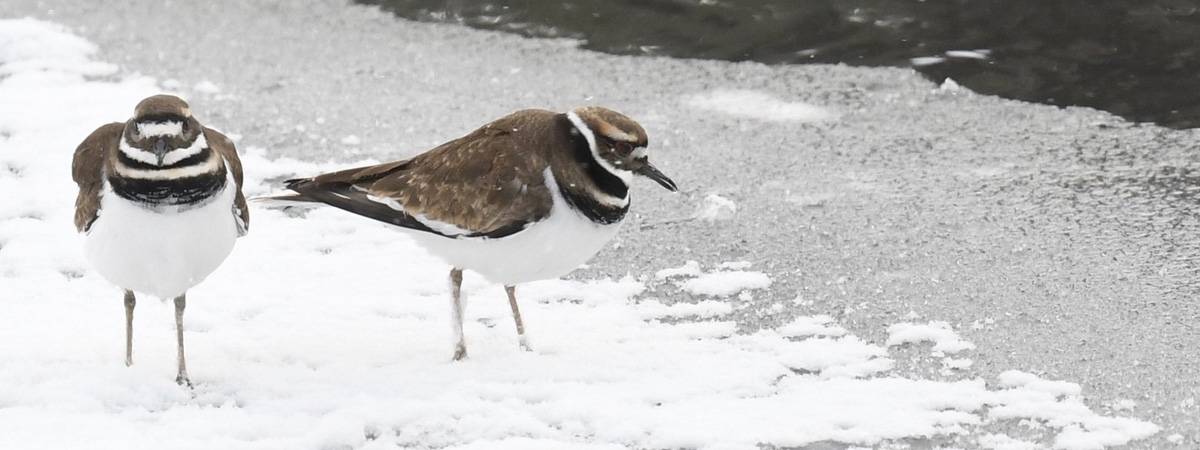Killdeer
(Charadrius vociferus)
By Sevilla Rhoads
Thank you to Chuck Gates for his time reviewing our bird blog posts for accuracy.
Distressed cries echo insistently across Sunriver’s meadows, so you look around in concern. A bird is flailing and dragging a limp wing along the ground. You slowly approach and follow to see if you need to help. Suddenly, the bird lifts off, flying perfectly away with a squeal of what sounds like teasing laughter. Yup, you were duped by a Killdeer!
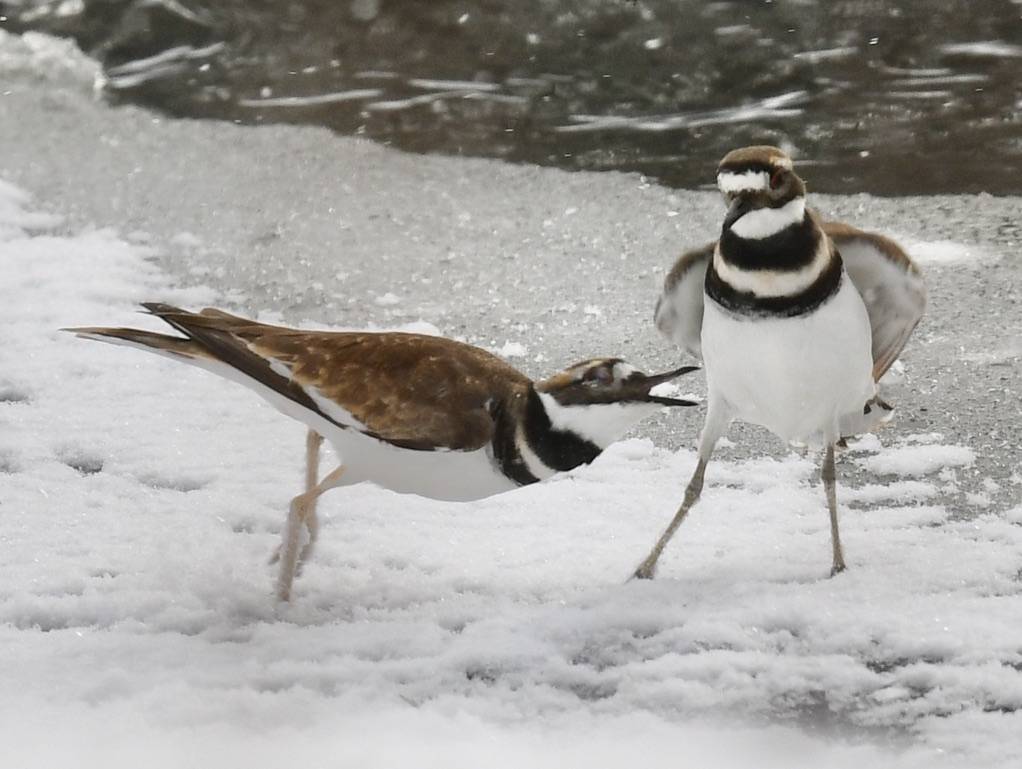
Killdeer draw predators away by pretending to be wounded. They need this Oscar-worthy distraction technique because they like to hang out and nest in exposed open areas. They forage for small creatures and seeds by running and, often rather conspicuously, bobbing along mudflats and places where the grass or other vegetation is primarily short. Their nests, relying on camouflage and distraction defense, are just shallow scrapings out in the open.
Likely our most theatrically-talented local birds, Killdeer never miss a chance to put on a show. Known as the Noisy or Chattering Plover, the scientific name for Killdeer, vociferus, means shouting or yelling. Want some fresh air while watching daytime soap operas? Give Sunriver’s Killdeers any excuse, and they will carry on dramatically with prolonged lamentations accompanied by much fussing around.
They are so bold, especially for a relatively small bird, Killdeer even have a performance designed to stop large hoofed animals from trampling their nests – they puff up, fan their tail over their head and charge operatically towards the beast to change its path. If Richard Wagner had been a birder, perhaps we would have Der Ring Das Killdeer rather than Nibelungen?
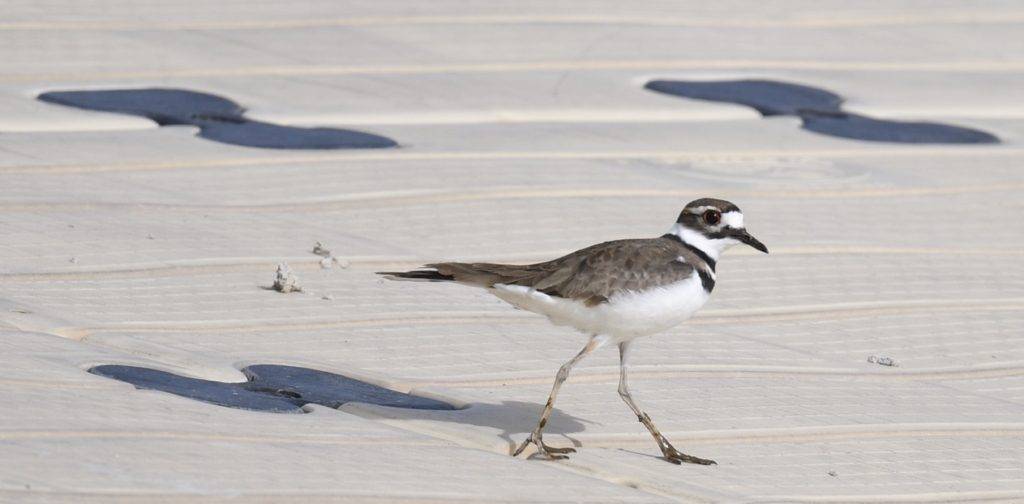
There is quite a bit of study and debate about distraction displays in birds and animals. My kids wonder how Killdeer survive when these birds do the opposite of quietly fleeing or hiding in the face of danger. Surely, most become prey if they brazenly encourage predators to follow them or, worse, run straight towards the potential killers? Amazingly, research shows that very few are captured by engaging in these risky defenses. Distraction display is a surprisingly effective survival tactic against native predators.
Killdeer performances include a fake brooding act. Near their nest, they scrape out some extra look-a-like nests. When a predator approaches, a Killdeer might run over and put on a show of protecting the empty scrape to fool the predator away from the actual eggs or chicks.
Some Killdeer cousins, like Golden Plovers, and perhaps Killdeer themselves, include a rodent impersonation in their repertoire. To lure away hawks and owls (Killdeer can forage at night), they ruffle feathers to look more like fur, pull their wings over their heads, stick out their tails, and even squeak to convince hunters they are tastier mammals.
Killdeer acting only distracts predators who hunt by sight and sound, not those which hunt by scent, especially at night. Ever the trickster, during nesting season, the Killdeer stops producing its scented preen oil and generates an odorless chemical instead.
Not only are the costumes and special effects impressive, but researchers think plovers are sophisticated enough to tailor their choice of disguise to the type of predator. Killdeer are Sunriver’s Hollywood stars, directors, and scriptwriters all in one bird!
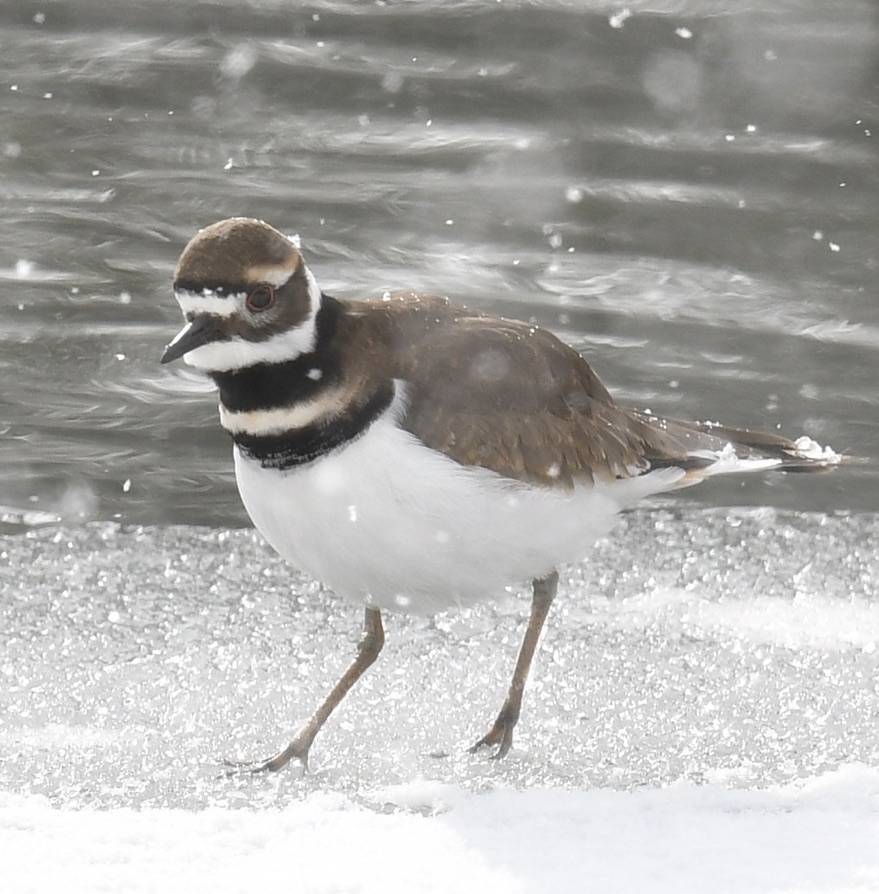
Some of our local Killdeer move to warmer areas for the winter, but a hardy few stay year-round. Despite being North America’s most common shorebird, the why and when of Killdeer migration is not well understood. Perhaps because Killdeer make a point of being seen and are not too shy to live near humans, most of us do not realize we have lost about half their population since the late sixties. The steepest decline is here on the western side of the country.
Research shows enough Killdeer survive against their natural predators, but these birds have not evolved to avoid vehicles, buildings, and chemicals like pesticides. Even an award-worthy Killdeer performance is useless against a loud off-road vehicle heading for the chicks (Killdeer like nesting on gravel and dirt tracks which remind them of clearings in their native habitats). And a Killdeer, foraging for snails, insects, and their larvae, has not developed a way to know if a field or lawn was treated with pesticides and herbicides.
On a lighter note, when we have a hard day and need cheering up, we browse plover fledgling photos. Killdeer (and other plovers) have adorable offspring with ridiculously long legs, big Anime or Manga-style eyes, and more down feathers than seem possible on such a tiny body. Sitting quietly this summer, near Sunriver’s meadows or river banks, you might see Killdeer young.
These chicks are born ready to run about and usually follow the parents out of the nest scrape on their second day of life. Both parents incubate and raise the young. On particularly hot days (which we seem to have more often), you might see both the male and female dampening their wings in some water, then standing with wings partially spread over the nest to shade and cool the eggs. This couple can try up to five times to have a successful brood and often raise two sets of kids a season.
To learn more about the Killdeer see: https://www.allaboutbirds.org/guide/Killdeer/overview
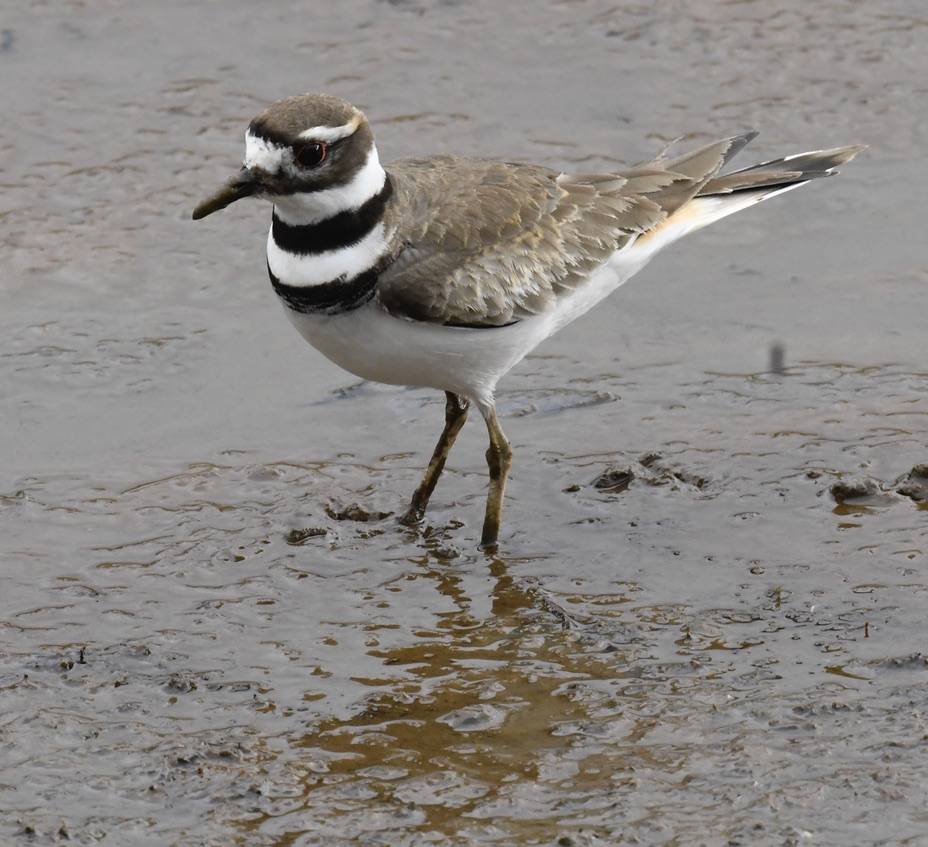
Identification Tips
Between eight and eleven inches long, Killdeer have a wingspan of around eighteen inches. They are brown on top of their heads and wings and white on their chins and bellies. Most noticeable are the S’Mores colored stripes on their heads and necks with white, black and brown layers. You can usually see two wide black rings around their necks. Their bill is dark and about half the length of the head. Their eyes appear dark in the center with a reddish brown ring. When Killdeer fan out their tails, you see it is a buffy orange color with white edges and some black barring. In flight, the ends of the extended wings are black edged with a white line pointing down the center towards the body. These shorebirds have longer legs than most songbirds and are often running and bobbing in fields, lawns, mudflats, and any open area with shorter ground cover. These birds call frequently.

